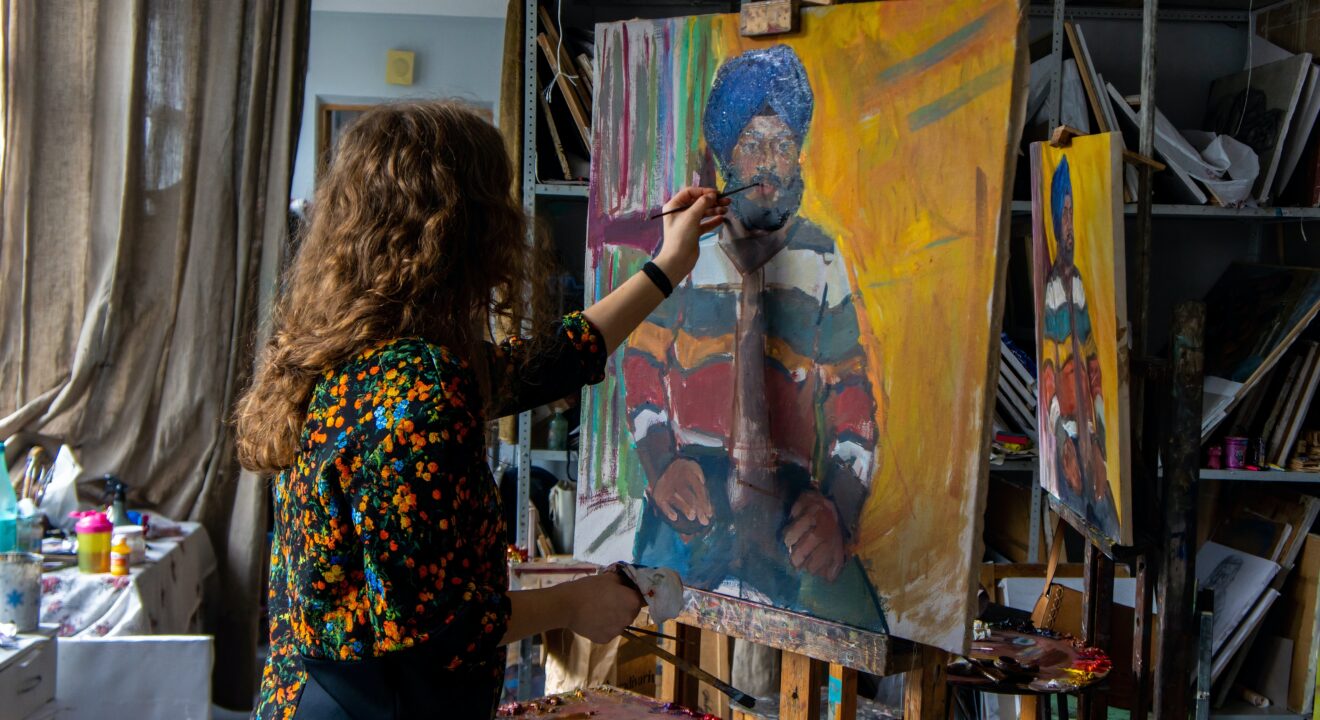Culture November 21, 2023


She lives in the watercolor paintings on museum walls, in the books on old rock stars sitting on nightstands, and the creative blood that runs through my veins. In her neighborhood of Eagle Rock in Los Angeles, she sits at her desk with the soft static of an old radio playing and the tapping of a lightly coated paint brush against a desk. She wears a lime green painting shirt that stands out against the white walls of her garage-turned-studio, and a smattering of paintbrushes and empty tins of paint scattered the floor. I tiptoed my way across the cold stone floor to peek at the magic I knew she was creating. She breathed life upon a blank canvas with her soulful sketches, and as I looked at her gently rubbing graphite at her desk, I began to uncover the enigma that is my mother.
My mother’s love for art drove her to further her education and dreams in graduate school. Mentored and taught mostly by male artists, she remembers being the only woman in the room. “Try talking to this person who is 30 years older than you and convince him your work is good,” she said. Women lacked inclusion when it came to the art world, so she searched for connections with other women sculptors and artists to befriend and create a community with. Her paintings reflected a growing abstractionist, she tore up old rags and scraps of paper and placed them upon her canvas. As her creative style evolved she switched to graphite pencils, tracing circles and sketching faces against mountaintops, the colors and faces reflecting her fears of slowing down and her drive to keep going. As she gained success with show offers, she decided she wanted to start a family, and her career became something to balance. While my mother was pregnant, many dealers believed artists starting families were an obstacle to the art. When she had an opening in San Francisco, her art dealer was unhappy with her changing style. When she was offered a show at a gallery in Houston, she told the dealer she couldn’t make the opening because of her C-section, and all at once the show was gone. She recollects how unkind the art world was to families, your work came first, and it had to be your entire world. My mother persisted, she sat for hours a day writing grants, messaging art dealers, and pushing forward in her career. She called me one night to tell me that a proposal she wrote to a dealer was noticed, “There’s hope,” she said with tears I heard through the breaking of her voice. “There’s hope.”
She never stopped painting, making art with purpose while raising me and my sister. She dealt with me in my hateful teenage years, enduring blows of my misdirected anger and running to hide in the studio when I was in one of my moods. Her persistence and ambition angered me. I never understood why she pushed me so hard to try new things, or cared so much when I didn’t want to do anything. I would yell at her for asking me too many questions or telling me what to do. Once the flame subsided, I ran back to her, apologizing with tears in my eyes because she didn’t deserve it. She immersed herself in painting the sets for plays I was in, and volunteering at my sister’s music school. She never stops having hope for her career, inviting over fellow artists and reaching out to connect with women she relates to. Her aspirations drive her to accomplish all she dreams of, proving that she could balance a healthy family and support a career she loved. Although my mother could doubt herself, I knew that she was capable of everything. I saw the sparkle in her eyes when she connected with another artist and the smile that grew on her face when talking about her love for music.
She believed in the power of impactful art, saying to me, “If you don’t make good work there isn’t anything to talk about.” As I turned the pages of “25 Women in Art” and noticed her photograph, I knew that her dreams of acknowledgement and being understood had come true. The world she lives in is a world that is on her side, and all her dedication paid off. I always knew her as someone who cared for me when I was sick, who put me in acting classes, and who told me my outfit was too much for school. As I evolved into the woman who stands beside her, I know her as Michelle Fierro: a painter, a wife, a sister, a friend; she is a woman the world should know.
About Eva Lindholm: Eva Lindholm is a third-year transfer student from Los Angeles at University of Southern California, Santa Barbara, majoring in film and media studies. She wrote her piece on her mother who is an artist, someone who inspires her every day and pushed her to apply for the opportunity. Eva has previously co-written one play and participated in over nine+ plays in her hometown which pushed her to explore her interest in writing. Eva hopes to continue her time at UCSB furthering her passion for writing and theater and is extremely excited for everyone to read her writing.

About Stories Matter: Stories Matter, a mentoring program for young female writers founded by ENTITY Mentor and writer Leslie Zemeckis, nurtures the next generation and inspires them to tell their stories. Co-sponsored by the Santa Barbara International Film Festival (SBIFF) and ENTITY Mag, published female authors give their time to emerging talent to encourage greatness and share their writing process. “The recent group, whose assignment was to write about ‘A Woman You Should Know,’” noted Leslie, “was exceptionally talented and a joy to work with.” ENTITY Mag is thrilled to showcase the work of these gifted young writers.